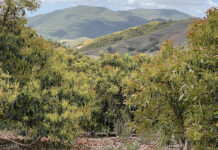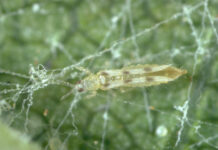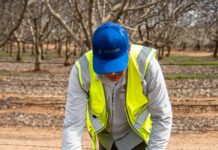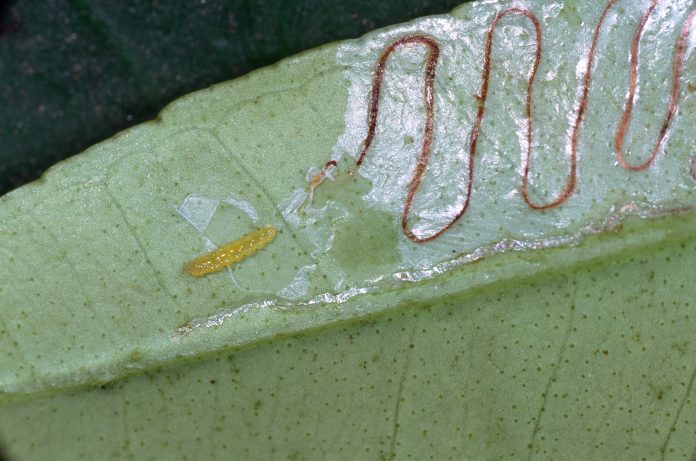
Protection of Tango trees from citrus leafminer for the first three to four years after planting is warranted, UC research has found, and monitoring for larval mining activity should
be done to determine the timing and frequency of insecticide treatments.
Matt Daugherty, UCCE entomology specialist at UC Riverside, and Beth Grafton-Cardwell, UC emeritus entomology specialist, noted in their citrus leafminer study that monitoring is critical as the citrus leafminer populations vary during the season and tend to decline with tree age.
Citrus leafminer, Phyllocnistis citrella, is a tiny moth that was detected in the U.S. in 1990 and found in California’s Central Valley citrus growing regions in 2006. It was not considered a serious pest in mature citrus, but studies found that infestations in the rapidly growing Tango acreage could affect tree growth and, later, crop yields.
Daugherty said that anything that impacts growth of new flush in citrus will also impact citrus leafminer populations. Optimal temperatures for citrus leafminer development are between 70 and 85 degrees F with greater than 60% humidity.

Visual surveys for this pest in young trees should take place in the spring and summer months. UC IPM guidelines note that citrus leafminer has four life stages: egg, larva, pupa and the adult moth. Adults cause no damage and live only one to two weeks. After mating, the female lays single eggs on the underside of leaves.
Eggs hatch about one week after being laid. The larvae begin feeding in the leaf and produce tiny, nearly invisible mines. When the larva emerges from the mine, it rolls the edge of the leaf over, causing a curling of the leaf. Inside that curled leaf edge, the leafminer becomes a pupa.
Daugherty and Grafton-Cardwell evaluated three insecticide treatment regimens to reduce citrus leafminer densities compared to untreated trees to determine if growth and development of Tango mandarin trees were affected during the first four
years after planting.
They found that the number of leaves that were suitable for egg laying by citrus leafminer fluctuated, with the lowest numbers occurring during the summer heat. Both the amount of tender leaf flush per shoot and the citrus leafminer populations per leaf declined during the three years of the study, reducing the number of applications of insecticides needed as trees matured.
Systemic imidacloprid combined with multiple foliar insecticides significantly improved the yield of trees in years three and four when they first came into bearing.
Individual insecticide applications reduced leafminer density for two to three weeks, including the systemic Admire Pro® applied at seven fluid ounces per acre.





